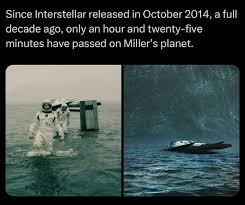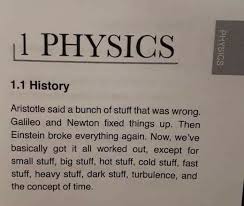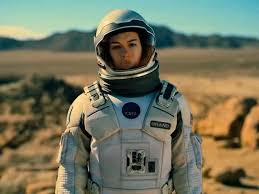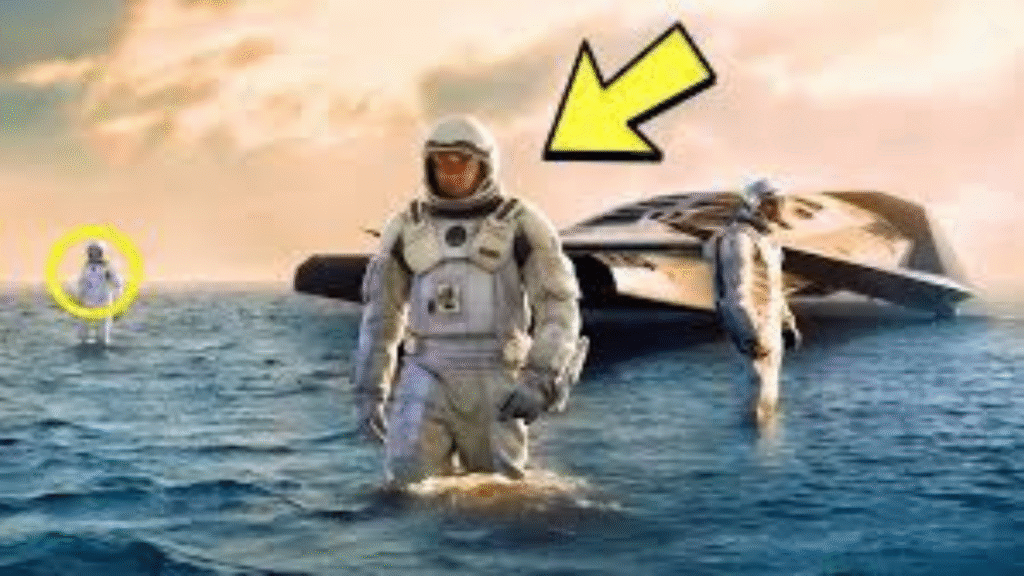Why Interstellar Still Stays With Us

Honestly, some movies out now are like fast food—you enjoy them in the moment but forget them a week later. Interstellar, though? It’s like a dish that lingers in your memory, something rich and layered, like your grandmother’s cooking. It sticks.
You know what makes it unforgettable? It’s more than just dazzling visuals or tear-jerking moments. It’s a combination of science so bold it reshaped textbooks and storytelling so emotional it made grown adults cry in theaters. One minute you’re lost in wormhole math, the next you’re choked up watching a father promise he’ll come back to his daughter.
Here’s the thing: Interstellar wasn’t made like most movies to watch. From hiring a Nobel Prize physicist to planting a real farm, every choice made the film stand out. And that’s why, even years later, people still ask questions like: “what should I watch tonight?” or “When will Interstellar Netflix bring it back in my region?” or even “Will we ever get an Interstellar 2?”
1. A Physicist Behind the Story

Christopher Nolan didn’t just wing the science. He called Kip Thorne, a Nobel Prize physicist, to anchor the film in reality. Wormholes weren’t made up on a whim—they were mapped from actual research.
Let me explain why that matters. Most films rely on “Hollywood science” where explosions make noise in space and planets exist just to look pretty. Interstellar grounded its plot in theories you could actually find in astrophysics journals. That’s why classrooms still use clips from the movie to explain relativity.
👉 If you’re the kind of viewer who loves a movie recommendation that makes you feel smarter, this is your pick. And if you want to explore more scientifically smart films, check out guides at NASA or movie lists on Space.com.
(Internal link idea: “10 Smartest Sci-Fi Films” page on www.whatishouldwatch.com)
2. Gargantua: A Black Hole That Changed Science

Gargantua wasn’t dreamed up by an artist. It was built from math. Real equations fed into software, producing an image so accurate that scientists published new papers based on it.
Think about that. A movie didn’t just entertain—it advanced human understanding. Compare that with most movies out now, where physics is bent for convenience.
It’s why fans return again and again, streaming on Interstellar Netflix, just to see Gargantua spin on their screens. And honestly, if you’re asking yourself “what should I watch if I want my brain blown wide open?”, this is the moment that answers it.
👉 For more scientific deep dives, check out Scientific American’s coverage on the movie’s impact.
(Internal link idea: A “Science of Movies” hub on www.whatishouldwatch.com)
3. Music First, Movie Later

Hans Zimmer composed the soundtrack before seeing a single frame. Nolan gave him one page: a father and a child. No mention of galaxies or wormholes.
And you can tell, right? The music feels raw, almost painfully human. When that organ swells during the docking sequence, it’s not about ships—it’s about desperation, timing, survival. You know what? That’s why the soundtrack feels more alive than most.
If you’re wondering “what should I watch with unforgettable music?”, this film is your answer. The score alone makes it a top movie recommendation.
👉 You can stream the full soundtrack on Spotify or pick up the vinyl for an even deeper experience.
(Internal link idea: “Best Movie Soundtracks” article on www.whatishouldwatch.com)
4. Planting and Burning 500 Acres of Corn

Instead of digital cornfields, Nolan had a real farm planted. And then? He burned it down for a scene. That’s not just filmmaking—it’s dedication.
You can almost smell the charred stalks, hear the crackle of fire, and feel the dust in your throat. That tactile realism is what sets it apart from the glossy sheen of other movies out now.
👉 Want to see other films famous for practical effects? Try Collider’s features.
(Internal link idea: “Movies With Insane Behind-the-Scenes Efforts” list on www.whatishouldwatch.com)
5. Robots With Real Weight

TARS and CASE weren’t just digital tricks. They were puppeteered machines, operated on set. That’s why when Cooper leans on TARS, it doesn’t look fake. It wasn’t.
It reminds me of Jim Henson’s work or even the practical puppets from the original Star Wars trilogy. Compare that to CGI sidekicks in other movies, and you’ll understand why these robots became fan favorites.
👉 To explore how puppetry still influences movies, check out Jim Henson’s official archive.
(Internal link idea: “Best Robot Characters in Movies” article on www.whatishouldwatch.com)
6. Time Dilation That Breaks Your Heart

On Miller’s Planet, one hour equals seven years back on Earth. Sounds made-up? Nope. Einstein’s relativity explains it. And Kip Thorne confirmed it.
That’s why Romilly’s aging hits so hard. It’s not fantasy—it’s plausible science. You know what, that’s the kind of scene that keeps Interstellar on every list of must-see movies to watch.
👉 If you want to explore relativity in simple terms, visit Einstein Online.
(Internal link idea: “Movies That Teach Real Science” section on www.whatishouldwatch.com)
8. The Wormhole Looked Strange Because It Was Right

Most sci-fi movies make wormholes look like tunnels of light. But real physics? Says they’d appear as spheres. That’s why Interstellar’s wormhole feels uncanny.
It takes some adjusting, but once you know the science, you realize Nolan got it right. And suddenly you can’t unsee it.
👉 Check out Space.com’s wormhole explanations.
(Internal link idea: “Biggest Sci-Fi Myths vs. Facts” on www.whatishouldwatch.com)
9. Inspiring Real Space Dreamers

After the film’s release, NASA saw a surge in interest. Applications rose. Students asked more questions. For a while, space exploration was cool again.
That’s not something most movies out now can claim. This one didn’t just sell tickets—it inspired careers.
👉 For proof, explore NASA Careers.
(Internal link idea: “Movies That Inspired Real Careers” feature on www.whatishouldwatch.com)
10. The Ending Could’ve Been Much Darker
The ending we saw was emotional—Cooper reuniting with Murphy. But the original draft? Cooper never made it back. No reunion. No hope. Just tragedy.
Thank goodness Nolan softened it. Still, this alternate version fuels speculation about Interstellar 2. Could a sequel explore darker possibilities? Fans keep watching on Interstellar Netflix, hoping for clues.
Why Interstellar Remains a Classic
So here we are: ten facts later, and it’s clear why Interstellar isn’t just another entry in “movies out now.” It’s a cultural landmark. It planted cornfields, shaped science, inspired NASA, and gave us robots with personality.
If you’re still asking “what should I watch tonight?”, stop scrolling. Head to Interstellar Netflix (if it’s available in your region) or revisit it on Blu-ray. It’s one of those movies to watch that doesn’t just pass—you carry it with you.
👉 Want more movie recommendation guides like this? Visit www.whatishouldwatch.com. You’ll find curated lists, reviews, and thoughtful breakdowns on films worth your time.
FAQ Section
Q1: Is Interstellar on Netflix right now?
Availability changes by region. In some countries, yes—it’s listed as Interstellar Netflix. In others, you may need to rent it from services like Amazon Prime or Apple TV.
Q2: Will there be an Interstellar 2?
As of now, no official announcement. But fan demand is high, and Nolan’s universe leaves room for speculation.
Q3: What should I watch if I loved Interstellar?
Try Arrival, The Martian, or Gravity. For more picks, check out curated lists on www.whatishouldwatch.com.
Q4: Is Interstellar scientifically accurate?
Yes, to a large extent. Kip Thorne’s work ensured the physics of wormholes and relativity were grounded in real theory.
Q5: Where can I get more movie recommendations like this?
Check out www.whatishouldwatch.com for reviews, curated guides, and breakdowns of movies to watch next.
🌐 External Link:
-
NASA – Wormholes & Black Holes
https://www.nasa.gov
(For references to Kip Thorne, relativity, and the film’s impact on space interest.) -
Scientific American – The Science of Interstellar
https://www.scientificamerican.com/article/the-science-of-interstellar/
(Great for explaining why Gargantua’s visuals were groundbreaking.) -
Space.com – Wormholes Explained
https://www.space.com/wormholes.html
(When discussing how the wormhole was visualized as a sphere.) -
Einstein Online – Relativity for Everyone
https://www.einstein-online.info/
(Supports the Miller’s Planet time dilation explanation.) -
Spotify – Interstellar Soundtrack by Hans Zimmer
https://open.spotify.com/album/1kTnPJBNGxOuzdEJgDgiCt
(To let readers stream the iconic score.) -
Collider – Movies with Practical Effects
https://collider.com/
(For when you highlight Nolan’s choice to plant a farm instead of using CGI.)
